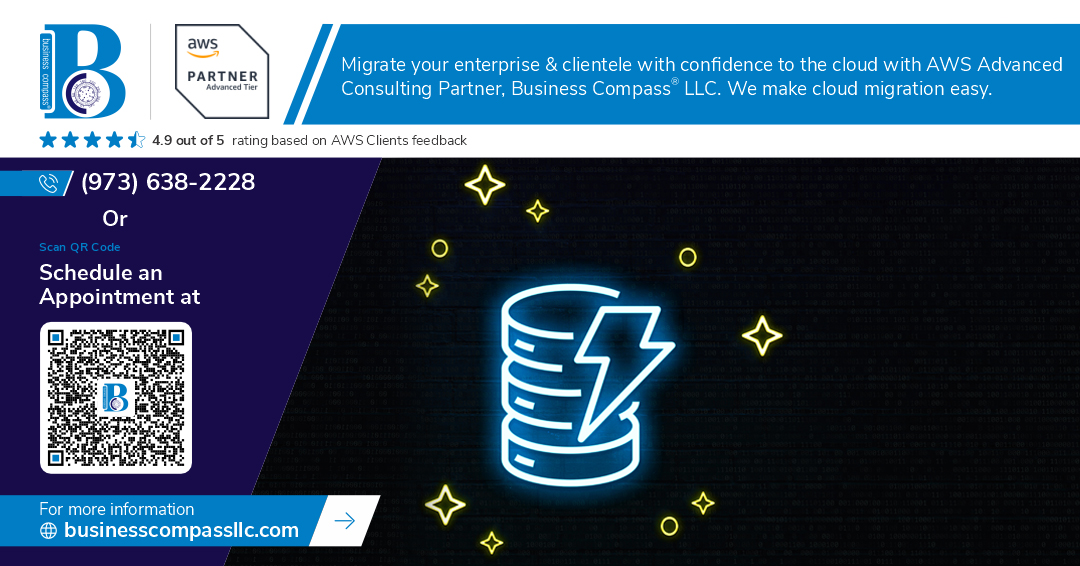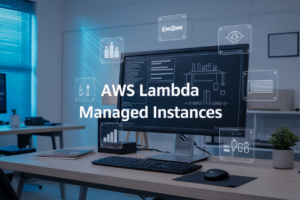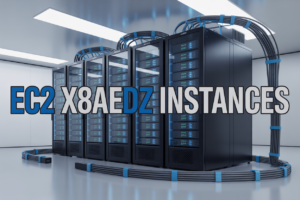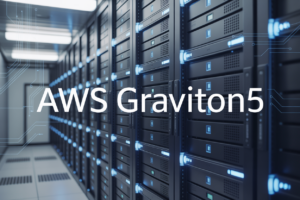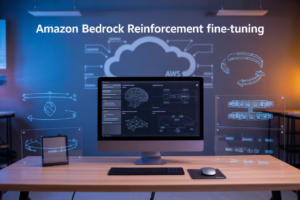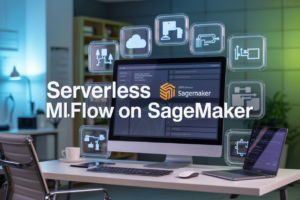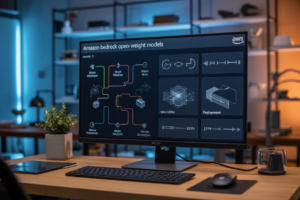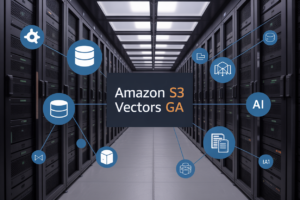You’re staring at your database decision with the same expression I had choosing between tacos and pizza last night. Both sound good, but which one is right?
When it comes to AWS databases, picking between DynamoDB and RDS isn’t just a technical choice—it’s a strategic one that affects your application’s performance, scalability, and your team’s sleep schedule.
I’ve spent years helping companies navigate AWS database comparison decisions, and I’m going to save you the headaches I’ve witnessed firsthand.
By the end of this post, you’ll know exactly when to use DynamoDB’s NoSQL flexibility and when RDS’s relational structure makes more sense for your specific use case.
But first, let me share the million-dollar question that changes everything about this decision…
Understanding AWS Database Services
Key features of DynamoDB
DynamoDB shines with millisecond response times at any scale. It’s fully managed, handles auto-scaling like a champ, and supports both document and key-value data models. The serverless pricing means you pay only for what you use, while offering multi-region replication and point-in-time recovery for those who need bulletproof reliability.
Key features of RDS
RDS gives you the comfort of familiar relational databases (MySQL, PostgreSQL, SQL Server) without the management headaches. It handles automated backups, software patching, and failure detection. The Multi-AZ deployments provide high availability, while read replicas boost performance. You get transaction support and complex query capabilities that traditional SQL databases are famous for.
AWS database ecosystem overview
AWS doesn’t stop at just DynamoDB and RDS. Their database portfolio is massive – from Aurora for MySQL/PostgreSQL compatibility with cloud optimizations, to ElastiCache for in-memory performance, Redshift for data warehousing, and Neptune for graph databases. Each service targets specific workloads, letting you pick the right tool rather than forcing one solution for everything.
Pricing models comparison
| Feature | DynamoDB | RDS |
|---|---|---|
| Billing model | Pay-per-request or provisioned capacity | Instance hours + storage |
| Free tier | 25GB storage, 25 WCU/RCU | 750 hrs micro instance, 20GB storage |
| Cost predictability | Variable with traffic | More stable, instance-based |
| Storage costs | Only pay for data stored | Pay for allocated storage |
| Scaling costs | Auto-scaling available | Instance resize requires planning |
DynamoDB Use Cases and Advantages
High-throughput applications
DynamoDB shines when your app needs to handle millions of requests per second. Think Netflix or Lyft – they use it because it scales without breaking a sweat. You don’t have to worry about infrastructure management, just set your throughput needs and AWS handles the rest.
Serverless architectures
DynamoDB pairs perfectly with Lambda functions in serverless setups. No connection management headaches or scaling issues to worry about. Your functions spin up, make their DynamoDB calls, and shut down – efficient and cost-effective for event-driven applications.
Applications with unpredictable scaling needs
Got a flashy new app that might go viral overnight? DynamoDB’s got your back. Unlike traditional databases where you’d scramble to add servers, DynamoDB scales automatically. Your database grows with your success, not becomes the bottleneck that kills it.
Low-latency requirements
When milliseconds matter, DynamoDB delivers. With single-digit millisecond response times and global tables for worldwide distribution, it’s ideal for applications where users expect instant results – gaming leaderboards, shopping carts, or real-time bidding systems.
Simple query patterns
If your access patterns are straightforward – “get me this item by ID” or “find all items with this attribute” – DynamoDB is your friend. It excels at simple key-value lookups and doesn’t need complex joins or transactions to perform at its best.
RDS Use Cases and Advantages
RDS Use Cases and Advantages
A. Complex query requirements
RDS shines when your data needs complex SQL operations. Think joins across multiple tables, aggregations, and sophisticated filtering – all things that NoSQL databases struggle with. If you’re running analytics or need to slice and dice data in unpredictable ways, RDS gives you that SQL flexibility you can’t live without.
B. Applications needing ACID compliance
Need absolute data integrity? RDS databases follow ACID principles (Atomicity, Consistency, Isolation, Durability) by design. This makes them perfect for financial transactions, inventory management, or anywhere incorrect or partial data updates would be catastrophic. Your data stays consistent even when things go wrong.
C. Existing SQL-based applications
Got an app already built on MySQL, PostgreSQL, or SQL Server? Moving to RDS is practically painless. No code rewrites, no query language translations, no schema redesigns. You’ll keep your familiar tools and workflows while AWS handles the infrastructure heavy lifting.
D. Reporting and business intelligence
BI tools love SQL databases. Connect Tableau, Power BI, or Looker to RDS, and you’re ready to build dashboards and reports. The structured nature of relational databases makes them ideal for the kind of organized data analysis that drives business decisions and reveals trends your company needs to spot.
Performance Considerations
Read/write capacity and throughput
DynamoDB and RDS handle throughput quite differently. DynamoDB lets you configure specific read/write capacity units, giving you precise control over performance and cost. RDS, on the other hand, bases throughput on your instance type and storage configuration.
Latency comparison
DynamoDB delivers consistent single-digit millisecond responses, making it perfect for latency-sensitive applications. RDS typically has higher latency but provides more predictable performance across complex queries that would choke a NoSQL system.
Scaling capabilities
DynamoDB shines with automatic, seamless scaling that handles millions of requests per second without breaking a sweat. RDS requires more planning – you’ll need to vertically scale instances or implement read replicas, which demands more hands-on management.
Consistency models
DynamoDB offers two consistency options: eventually consistent reads (faster but potentially stale data) and strongly consistent reads (latest data but higher latency). RDS follows ACID properties with immediate consistency, which simplifies application logic but can impact performance under heavy loads.
Data Modeling Approaches
NoSQL vs relational design patterns
DynamoDB and RDS represent two fundamentally different worlds of data modeling. With DynamoDB, you’re thinking about access patterns first – designing tables around how you’ll query data. RDS follows the traditional relational approach where you normalize data into logical tables with relationships. Choose DynamoDB when your access patterns are simple but scaling needs are massive. Pick RDS when your data relationships are complex and you need ACID transactions.
Schema flexibility in DynamoDB
DynamoDB doesn’t force you into rigid structures. You can add attributes to items whenever you want without affecting other items in the table. This flexibility shines when dealing with evolving data requirements or varied item attributes. But remember – this freedom comes with responsibility. Without careful planning, you might end up with a disorganized data structure that’s hard to query efficiently.
Normalization in RDS
RDS databases thrive on structure and relationships. Normalization reduces redundancy by organizing data into related tables connected through keys. This approach maintains data integrity and consistency but requires joins for complex queries. The tradeoff? Better space efficiency and fewer update anomalies at the cost of query complexity. Perfect when data relationships matter more than raw speed.
Migration and Hybrid Strategies
Migration and Hybrid Strategies
A. Moving from relational to NoSQL
Shifting from RDS to DynamoDB isn’t just a technical move—it’s a mindset shift. You’ll need to rethink data access patterns, flatten hierarchical structures, and embrace denormalization. Many teams start with a small, non-critical workload as a proof-of-concept before tackling larger migrations. The payoff? Incredible scalability and performance gains when done right.
B. Using both databases together
Why choose when you can use both? Smart AWS architects leverage RDS for complex transactions and reporting while DynamoDB handles high-throughput operations. This “best-of-both-worlds” approach lets you store customer profiles in DynamoDB for lightning-fast lookups while keeping financial records in RDS for ACID compliance and complex joins.
C. Data synchronization patterns
Keeping data in sync across DynamoDB and RDS requires thoughtful architecture. Popular patterns include:
- Change Data Capture (CDC) – Track changes in one database and propagate them to another
- Event-driven updates – Use AWS Lambda to update both databases when events occur
- Batch synchronization – Schedule regular reconciliation jobs for less time-sensitive data
Each approach trades off complexity, latency, and consistency—pick what matches your needs.
D. Step-by-step migration approach
A successful database migration unfolds in phases:
- Analyze – Map current data structures and access patterns
- Design – Create optimal schema for your DynamoDB tables
- Dual-write – Write to both databases during transition
- Validate – Verify data consistency between systems
- Cutover – Redirect traffic to the new database
- Decommission – Retire old database components once stable
Take it slow—rushing migrations leads to midnight emergency calls nobody wants.
Cost Optimization Strategies
Cost Optimization Strategies
A. DynamoDB cost management
DynamoDB’s pay-for-what-you-use model can surprise you with unexpected bills if you’re not careful. Track your read/write capacity units closely and leverage auto-scaling to handle traffic spikes without overpaying. Consider switching between on-demand and provisioned capacity based on your workload patterns – many teams save 70% just by making this switch.
B. RDS cost management
RDS pricing hits your wallet on multiple fronts: instance size, storage, I/O operations, and data transfer. The secret sauce? Monitor your actual usage patterns and downsize instances that are running at low utilization. Turn off non-production databases during off-hours and implement automated snapshots to reduce storage costs while maintaining your recovery capabilities.
C. Reserved capacity options
Both services offer significant discounts when you commit upfront. RDS Reserved Instances can slash your costs by up to 60% with a 3-year commitment, while DynamoDB Reserved Capacity offers similar savings for predictable workloads. The math is simple: if your application is sticking around, reserved capacity pays for itself within months.
D. Right-sizing your database
Stop overprovisioning! Most AWS databases run at under 20% capacity because teams fear performance issues. Start small, monitor closely, and scale up only when metrics show it’s necessary. For RDS, match your instance type to your workload characteristics – memory-optimized for caching, compute-optimized for analytics. For DynamoDB, regularly review your access patterns to optimize partition keys.
Real-world Decision Framework
Real-world Decision Framework
A. Business requirements assessment
Choosing between DynamoDB and RDS isn’t just a technical decision—it’s about matching your business needs to the right tool. Start by asking: Do you need complex queries and joins (RDS) or lightning-fast access to simple data (DynamoDB)? Your answer shapes everything that follows.
Choosing between DynamoDB and RDS depends on your specific application requirements. DynamoDB shines for applications needing high scalability, low-latency access, and simple key-value operations, while RDS is ideal for complex queries, transaction-heavy workloads, and applications with established relational schemas. Consider factors like data structure, query patterns, consistency requirements, and budget constraints when making your decision.
Remember that these services aren’t mutually exclusive—many sophisticated AWS architectures leverage both databases together. Start by identifying your core application needs, begin with the most suitable option for your primary workloads, and be prepared to implement a hybrid approach as your application evolves. The right database choice will provide the foundation for a scalable, reliable, and cost-effective cloud infrastructure.










